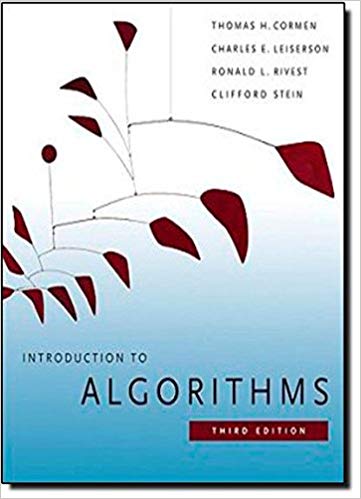Professor Borden proposes a new divide-and-conquer algorithm for computing minimum spanning trees, which goes as follows. Given
Question:
Professor Borden proposes a new divide-and-conquer algorithm for computing minimum spanning trees, which goes as follows. Given a graph G = (V, E), partition the set V of vertices into two sets V1 and V2 such that |V1| and |V2| differ by at most 1. Let E1 be the set of edges that are incident only on vertices in V1, and let E2 be the set of edges that are incident only on vertices in V2. Recursively solve a minimum-spanning-tree problem on each of the two subgraphs G1 = (V1, E1) and G2 = (V2, E2). Finally, select the minimum-weight edge in E that crosses the cut (V1, V2), and use this edge to unite the resulting two minimum spanning trees into a single spanning tree.
Either argue that the algorithm correctly computes a minimum spanning tree of G, or provide an example for which the algorithm fails.
Step by Step Answer:

Introduction to Algorithms
ISBN: 978-0262033848
3rd edition
Authors: Thomas H. Cormen, Charles E. Leiserson, Ronald L. Rivest





